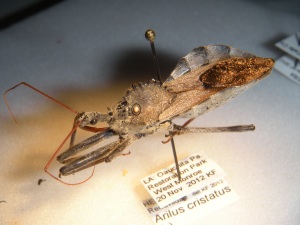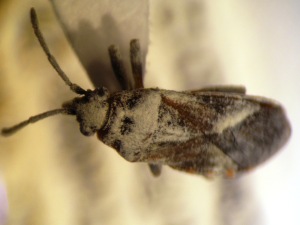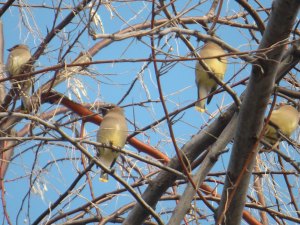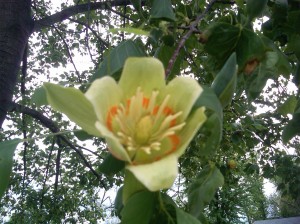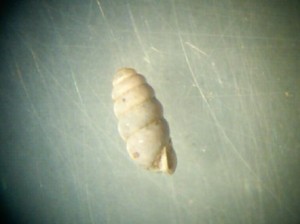The advice of Orkin notwithstanding, having some insects around the house is fun 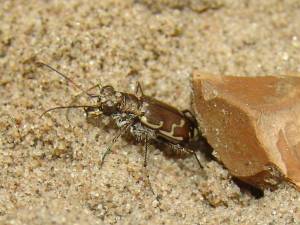 and educational. This photo is from my first attempt at keeping tiger beetles. I knew Cicindela repanda burrowed into the sand or under things to spend the night, but the first morning when I looked into all the containers I set up the day before and there were no beetles – i thought they had escaped. Later that morning when they woke up and emerged from their tunnels, I realized that what I had previously read was true.
and educational. This photo is from my first attempt at keeping tiger beetles. I knew Cicindela repanda burrowed into the sand or under things to spend the night, but the first morning when I looked into all the containers I set up the day before and there were no beetles – i thought they had escaped. Later that morning when they woke up and emerged from their tunnels, I realized that what I had previously read was true.
Nothing is more gratifying than answering your own questions. Kelly and I found 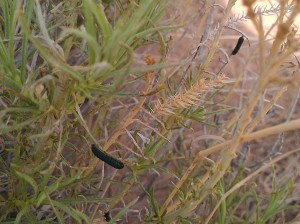 this Chrysomelid beetle larvae tearing up Chrysothamnus viscidiflorus just north of Rawlins, WY this year. So, we gathered up a bunch of brush with about a half dozen larvae, put them in a container and brought them home to rear out. The rearing out process took a couple weeks, so we had to get fresh vegetation a couple times – if you bring larvae home you need to correctly identify the plant so you can get more. After a couple weeks we had pupae and excitedly waited for keyable adults… Trirhabda nitidicollis. This was not a new to science, but it was new to us! This same process is used by many Lepidopterists to learn their caterpillars and collect very ‘fresh’ adults.
this Chrysomelid beetle larvae tearing up Chrysothamnus viscidiflorus just north of Rawlins, WY this year. So, we gathered up a bunch of brush with about a half dozen larvae, put them in a container and brought them home to rear out. The rearing out process took a couple weeks, so we had to get fresh vegetation a couple times – if you bring larvae home you need to correctly identify the plant so you can get more. After a couple weeks we had pupae and excitedly waited for keyable adults… Trirhabda nitidicollis. This was not a new to science, but it was new to us! This same process is used by many Lepidopterists to learn their caterpillars and collect very ‘fresh’ adults.
Yet another rearing strategy is the ‘pupal grab’. If I see a pupa, and I want to
 know what it is, grabbing the pupa and bringing it home allows me to have a keyable adult with minimal effort. I always try to photograph the pupa (and usually get better results than this), identify the plant, and record how long the duration of the pupal stage was. This pupa was taken from Artemisia tridentata in Lincoln County, Idaho on 4 July 2012 and two days later was a beautiful adult Coccinella transversoguttata.
know what it is, grabbing the pupa and bringing it home allows me to have a keyable adult with minimal effort. I always try to photograph the pupa (and usually get better results than this), identify the plant, and record how long the duration of the pupal stage was. This pupa was taken from Artemisia tridentata in Lincoln County, Idaho on 4 July 2012 and two days later was a beautiful adult Coccinella transversoguttata.
Rearing insects gives you abundant opportunity to interact with insects in the comfort of your home. The photographic opportunities are astounding. Please recognize that insects are a valuable resource and collect ethically. This isn’t an 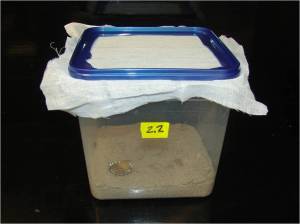 expensive proposition, the research rearing unit shown at left is simply a cheap plastic food container with a modified lid. Above all, keep good notes and enjoy peeking into a world that most people don’t even realize exists.
expensive proposition, the research rearing unit shown at left is simply a cheap plastic food container with a modified lid. Above all, keep good notes and enjoy peeking into a world that most people don’t even realize exists.



